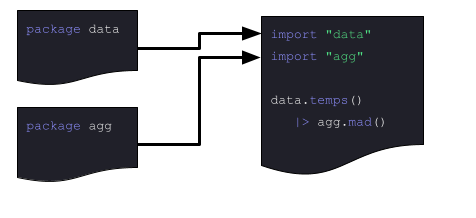More Capabilities, Less Code: Announcing Platform New Features at InfluxDays 2022
By
Rick Spencer /
Product, Company
Nov 02, 2022
Navigate to:
The InfluxDB platform has evolved a lot over the past decade. But with every innovation we’ve added to the platform, the focus behind our efforts has remained the same: Build cool stuff for people who build cool stuff.
What we mean by this is we want to make it incredibly easy for users to build valuable applications with their time series data. We do that by offering a wide range of tools, features, and resources that meet builders on their terms. Whether that means Telegraf plugins for your systems, client libraries in the language(s) you know best, or providing cloud-to-cloud data collection, we want to facilitate as many options as possible to make every touchpoint experience with time series data as quick as possible.
Today, at InfluxDays 2022, our annual user and community event, we’re announcing even more new features – all built to deliver more capabilities and less code for our users.
With no further ado, here are the latest updates to the InfluxDB platform:
Flux 1.0
Flux is our native scripting and query language. It began as a re-thinking of our original query language, InfluxQL; however, Flux is much more powerful, capable of very complex tasks and data transformations. With Flux 1.0, we’re bringing even more collaboration, flexibility, and stability to the language:
- Flux Editions: Flux is widely used across many applications so any breaking changes can disrupt your applications. Starting with Flux 1.0, you can control whether you want to accept a breaking change, ensuring Flux is always a stable platform. Along with Flux 1.0 we are introducing Flux Editions, a new feature that lets you opt into new features that would otherwise be breaking changes. Flux Editions are opt-in to give you control over when you want to upgrade to get new features. You can also have different segments of your systems running on different Flux Editions, so if a Flux feature update is critical to certain aspects of your system, you can choose to only update those. As a result, you can prioritize the stability of your system against the need for new features and capabilities available in Flux. Together these updates ensure Flux has the best of both worlds – a stable language platform and cutting-edge features.
- Modules: Modules are an exciting addition to Flux. They follow industry standards, so if you’re familiar with other language packaging systems you’ll get the gist of Flux modules pretty quickly. Each Flux module can be versioned and is immutable, providing a safe ecosystem for shared code.
- Polymorphism: This feature works in tandem with Flux modules. Polymorphism allows you to use labels to write Flux scripts that are independent of your data schema. Labels are a new type we’ve added to Flux to allow you to abstract column names in your code. This makes them easier to share and repurpose across disparate buckets, so you can do more with less effort.
- Dynamic Type: This last feature is another new type in Flux 1.0 that allows any JSON data to be accurately represented with Flux data types. Flux is a strictly typed language and JSON is not, so dynamic type allows users to correctly represent JSON data in Flux.

Telegraf Custom Builder
Of course, before you can work with your data you need to get it into InfluxDB. Custom Builder is a key new feature that makes Telegraf, our open source data collection agent, more nimble and resource-friendly – especially for IoT users.
As we continue to add new plugins to the Telegraf binary, its size increases significantly. But rarely do developers need to use each of these plugins, and still others have limited resources that would benefit from a smaller binary. Custom Builder allows you to quickly and easily build custom Telegraf agents that include only the plugins you need. This saves space and compute resources for your data collection. The tool scans a Telegraf configuration file and builds a binary that only includes the selected plugins.

Query Experience
The last feature we’re announcing focuses on the Query Experience within InfluxDB Cloud to make it faster and easier to contextualize data in the UI. The biggest update is the new Script Editor, which includes an instructional, integrated schema browser so that you can better understand the shape of your data, as well as upcoming multi-language support for Python and JavaScript. You can also combine point-and-click schema selections with raw script editing, enabling you to work with code faster and in a way that suits your needs.

The new editor framework also supports multiple query languages. This comes on the heels of last week’s announcement for the new InfluxDB time series engine, which includes new language support for SQL queries natively, using the PostgresQL Wire protocol, and other third-party query tools that leverage that protocol as well.
All this and more at InfluxDays
Tune into InfluxDays 2022 to learn more about these new features from InfluxData’s product managers and engineers who built them. Throughout the event, we’ll be talking more about how these new features extend the flexibility of InfluxDB, Telegraf, and Flux, and make the development process more efficient than ever.
It’s been a packed year for InfluxData and we’re excited to showcase the breadth and depth of our latest solutions, and outline the next evolution of InfluxDB: the Smart Data Platform during the next two days.

We’re really excited to see what you build with these latest updates. Be sure to let us know what you think in our Slack channel and community forums. See you there!

